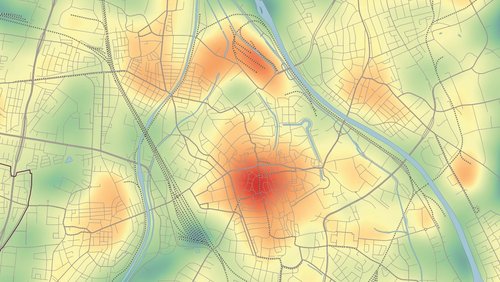Heat risk management in the city – HEATS
bifa is participating in the development of a planning guide for municipal heat risk management

It’s finally happening! The two-year collaborative HEATS project was started in June. The objective of the collaborative project is, using the example of the cities of Augsburg, Hamm and Zwickau, to provide planning principles for municipal heat management and to initiate adaptation processes.
The Federal Government’s planning for a national heat protection plan reflects the importance of examination of the topic of heat in our towns and cities. The current collaborative project is intended to assist municipalities to assess and quantify the objective hazard, the vulnerability and the development of integrative solutions and planning strategies to facilitate better adaptation of the urban structure, economy and the provision of public services to climate change. The current project makes an important contribution to aligning municipal heat management to the actual needs.
The method for identifying heat hotspots was developed in the “Abc – Augsburg bleibt cool” (Augsburg stays cool) project – in which bifa was also involved. In the HEATS project, these hotspots will now be linked with sociodemographic data from the census. This is not only to estimate the overheating hazard in a 100 x 100 m grid, but also to determine with this resolution whether or which vulnerable groups live there, in order to be able to plan targeted and apposite adaptation measures for these people. These include, for example, the supply of nearby places to retreat in the event of heat (cool rooms in public buildings, green spaces, etc.). With the help of a newly developed topic-specific app, the results are to be visualised and the population sensitised to them. In addition, a general framework for a database in which heat-vulnerable persons can register or be registered will be compiled and discussed.
Furthermore, by way of example, type representatives for social facilities such as retirement homes are to be analysed by microscale, numerical urban climate models and further detailed studies (including building energy simulations) with regard to interior and exterior hazards and (structural and planning) adaptation measures illustrated at building and ambient level. Project results will be validated in workshops and prepared for further training and professional development courses for people in energy/climate protection consulting. It is also planned to form a network with other towns and cities.
The German Federal Environment Ministry is funding the project with the “Measures for adaptation to the consequences of climate change” funding guidelines. Within the project, bifa is responsible for analysing the needs for user-oriented technology development and is providing support and advice for the project communication and PR work.


